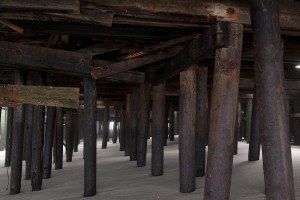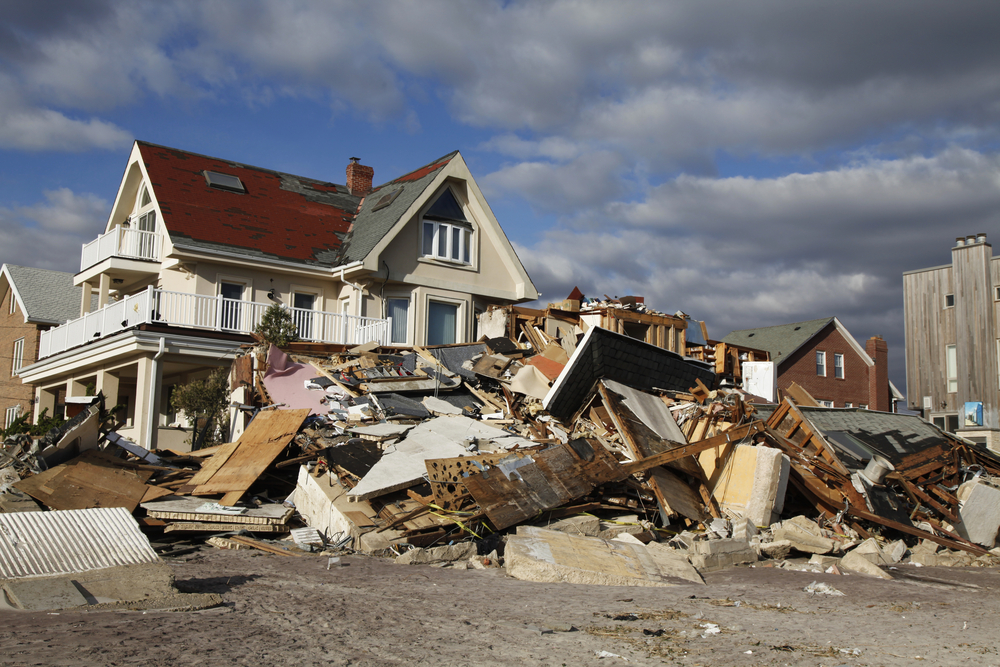A study by a leading coastal science center lends new support to New Jersey’s efforts to build protective sand dunes along its 127-mile coast.
The Coastal Research Center at the Richard Stockton College of New Jersey studied the state’s beaches just before and after Superstorm Sandy in October 2012. It found beaches with higher, wider dunes protected better against the storm than beaches without them.
The center publicized those findings shortly after Sandy. But a new scholarly paper in the academic journal “Shore & Beach” appears this month as several Jersey shore towns fight the state’s efforts to build dunes.
The results of the research “clearly showed the benefits of beach-dune systems as shore protection features in reducing storm damages to adjacent oceanfront communities,” said Daniel Barone, the center’s research director.
“Communities that suffered the greatest damages to structures and infrastructure were those where dunes were nonexistent or where elevations of the beaches and dunes were low or had narrow beach widths,” Barone said.
Seaside Heights, the internationally known resort town where MTV’s “Jersey Shore” reality TV show was filmed, didn’t have dunes on its beaches when Sandy hit Oct. 29, 2012. It had severe damage, including destruction of its boardwalk.
Just to the south, however, Seaside Park was protected by a decades-old system of well-established sand dunes and had comparatively little damage from Sandy.
The report noted that portions of Wildwood and Sea Isle City, even with some of the widest beaches in the state, suffered flooding damage because of the lack of dunes. Margate and Longport, which largely didn’t have dunes, “suffered substantial storm wave inundation,” it said.
“Among protection-savvy coastal residents, sand dunes are no longer a view-blocking nuisance, but rather an important element of a long-term community flood prevention plan,” the report said.
The release of the paper comes as Margate, Bay Head and the privately owned Jenkinson’s boardwalk in Point Pleasant Beach are resisting the dunes plan, saying that the sand piles are unnecessary or that the plan would result in private property being wrongfully seized. Margate sued the state in federal court and last year got a temporary restraining order barring the program from progressing.
A federal judge last week allowed the plan to proceed but required the state to give Margate 10 days’ notice before any beach construction work begins. Margate contends the dunes are not needed and will harm tourism in the coastal community just south of Atlantic City. The town says its existing system of bulkheads is sufficient to protect from ocean storm surge and notes that its worst Sandy damage came from back bay flooding on the opposite side of town.
Homeowners in Bay Head have raised $5 million to build their own protective rock walls between the ocean and their homes, and Jenkinson’s has launched a court challenge to the state’s right to seize private property for the dune plan. Communities in several northern Ocean County towns are also holding out against the plan, with oceanfront homeowners refusing to sign easements for the work.
Gov. Chris Christie has vowed the dunes will be built, with or without the consent of property owners, and has authorized the use of eminent domain to seize the beachfront property needed for the work, along with compensation to the owners.
Larry Ragonese, a spokesman for the state Department of Environmental Protection, agreed with the main conclusion of the study.
“We think a properly redesigned, robust dune system can help to protect New Jersey’s coastline, as this study points out,” he said.
Was this article valuable?
Here are more articles you may enjoy.


 Satellite Data Reveals Hurricane Melissa Devastation in Jamaica
Satellite Data Reveals Hurricane Melissa Devastation in Jamaica  Tesla Owner Complaints Rise in Probe Over Inoperative Doors After Battery Failures
Tesla Owner Complaints Rise in Probe Over Inoperative Doors After Battery Failures  Tariff-Linked Class Action Suits to Boost D&O Insurance Demand
Tariff-Linked Class Action Suits to Boost D&O Insurance Demand  Universal Music Settles Copyright Lawsuit With AI Startup Udio
Universal Music Settles Copyright Lawsuit With AI Startup Udio 